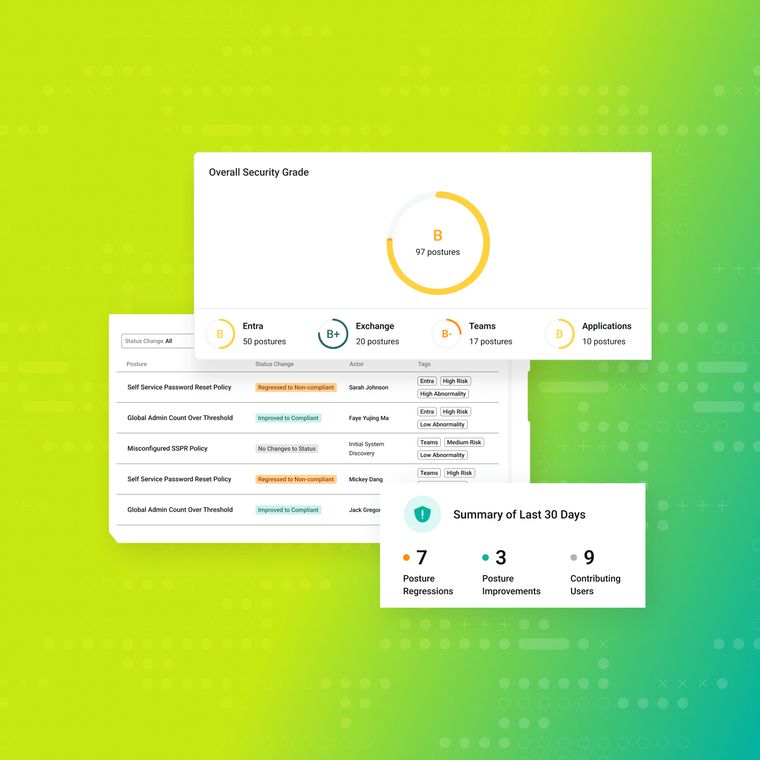The Rise of Direct Email Ransomware: What Every Security Leader Should Know
Discover why mail ransomware attacks are increasing and how security teams can stay prepared.
Abnormal AI
Ransomware has evolved from opportunistic malware into a sophisticated enterprise threat that bypasses traditional security layers through the most trusted channel in business: email. Modern cybercriminals have abandoned complex network infiltration tactics in favor of direct email delivery, which is a streamlined approach that weaponizes everyday business communications to achieve maximum impact with minimal effort.
Direct email ransomware represents the dominant attack vector facing organizations today. Unlike traditional multi-stage attacks that rely on stolen credentials or lateral movement, direct email campaigns embed the ransomware trigger within a single message, weaponized attachments, links to cloud files, or social engineering prompts that convince employees to act immediately.
Understanding how these attacks bypass existing email security controls and where current defenses fail is essential for safeguarding your organization's revenue, reputation, and operational resilience.
Understanding Direct Email Ransomware
Direct email ransomware presents a fast-moving, highly evasive threat that bypasses traditional defenses and delivers its payload in a single, deceptive message. Unlike multi-stage ransomware attacks, these campaigns use direct delivery to cause immediate damage, often before network tools can respond.
Below are the key aspects of how this threat operates and why it challenges conventional defenses.
Single-Message Attack Vector: Direct email ransomware embeds the entire kill chain into a single email. Once the user clicks a malicious attachment or link, the ransomware executes locally, encrypting data without needing further steps like lateral movement or third-party access. Traditional monitoring systems often fail to detect these rapid, contained attacks in time.
Speed and Stealth: Compared to conventional ransomware campaigns that unfold over days or weeks through remote services or compromised partners, direct email attacks act within minutes. They generate no external command-and-control traffic, which makes detection through legacy systems nearly impossible.
Advanced Delivery Techniques: Attackers leverage macro-enabled documents, oversized malicious archives that exceed cloud-scanner limits, and zero-day exploits. These payloads are difficult to analyze and often bypass signature-based filters entirely.
AI-enhanced Social Engineering: Social engineering is the core delivery method for these attacks, now strengthened by AI tools that generate flawless, context-aware phishing lures. This makes the messages more convincing and harder for users to distinguish from legitimate communication.
Blind Spots in Legacy Defenses: Traditional email security tools still rely heavily on known malware signatures. As a result, they remain ineffective against fileless attacks and seemingly benign messages that conceal encrypted payloads. Without behavioral analysis, these tools are unable to identify subtle anomalies.
Why It Matters
The evolution of ransomware toward fast, stealthy, direct email delivery has created unprecedented challenges for cybersecurity teams. These threats arrive quickly, leave minimal traces, and exploit the trusted communication channels businesses rely on daily. Addressing them requires advanced detection capabilities, specifically behavioral AI that recognizes deviations from normal communication patterns and responds instantly.
Understanding this shift is essential for building resilient email defenses that keep pace with modern threats.
The Impact on Organizations
Email-delivered ransomware causes significant harm across three key dimensions of business: operations, financial stability, and reputation. These attacks often trigger cascading failures that extend far beyond the initial compromise. The Medusa ransomware campaign offers a clear example of how malicious emails can destabilize an entire organization within hours.
Medusa is a ransomware-as-a-service (RaaS) variant first identified in June 2021. It has impacted over 300 victims across critical infrastructure sectors, including healthcare, education, legal, insurance, technology, and manufacturing. Notably, Medusa is distinct from both MedusaLocker and the Medusa mobile malware variant, as confirmed by the FBI.
In one documented case, a phishing email initiated a Medusa ransomware attack that resulted in widespread data encryption and exfiltration. The attackers demanded a ransom within 48 hours, leveraging a double extortion strategy, threatening to release stolen data if the ransom was not paid.
The consequences for the targeted organization were severe. Critical systems were encrypted, disrupting operations, while the threat of public data exposure heightened pressure to comply with demands. Attackers also disabled security tools and moved laterally within the network to maximize impact. This strategy compromised business continuity, data confidentiality, and financial health simultaneously.
This case underscores how direct email threats can endanger every aspect of an organization’s performance, revenue, operational resilience, and brand reputation, making them a critical priority for cybersecurity teams.
Key Challenges for Security Teams
Legacy email security solutions depend on static signature-based detection, which fails to identify modern threats such as payload-free, hyper-targeted campaigns. These attacks often exploit trusted accounts, making them difficult to detect and prevent. As a result, security teams face a significant gap between the sophistication of current threats and the limitations of existing defenses.
The following points outline the key challenges security teams must address:
Legacy Defenses Fall Short
Secure Email Gateways were built for bulk spam, not for modern, adaptive threats. Their static rule sets depend on known hashes, URLs, and sender reputations that criminals easily sidestep. Attackers now iterate new variants faster than vendors can publish signatures, and slow signature updates open a multi-day window of exposure.
Also, organizations may have complete endpoint protection in place, leaving significant gaps as AI-enabled phishing techniques grow more sophisticated. Sticking with legacy gateways forces you into a reactive posture, consuming analyst cycles while still letting the most damaging emails through.
Payload-Free and Targeted Emails Evade Detection
Modern campaigns often arrive empty-handed. The first message carries no attachment or obvious link, so signature scanners find nothing to flag. Attackers establish rapport, mimic internal tone, then follow up with a benign-looking Google Drive or OneDrive link that hosts the actual malware, files large enough to bypass automated scans. Because there is no malware signature in the initial email, traditional filters treat it as harmless.
Hyper-personalization, powered by AI, tailors language, timing, and context to each recipient, defeating keyword heuristics. Without behavioral baselining that understands what normal looks like for every user, organizations are forced to trust a toolset that cannot see the threat until encryption starts.
Compromised Internal Accounts Amplify Risk
Once attackers hijack a legitimate mailbox, they inherit the trust that your controls grant to internal traffic. Conversation hijacking allows them to reply inside existing threads, mixing ransomware with Business Email Compromise to maximize leverage.
Because the sender passes SPF, DKIM, and DMARC checks, rule-based engines remain silent. Even advanced sandboxing struggles: no payload crosses the boundary until a user follows an internal instruction to download or enable macros. The result is a no-malware path that exploits the very trust hierarchy your organization relies on for productivity.
These challenges underscore the need for security approaches that can adapt to evolving threats rather than simply matching known patterns.
Best Practices to Mitigate Direct Email Ransomware
To protect against direct email ransomware, organizations must adopt a layered security strategy and some best practices. Here is a list of practices that strengthen each stage of defense, minimizing the risk and impact of ransomware attacks.
Deploy Behavioral AI for Early Detection
Traditional signature-based email filters often miss sophisticated ransomware threats. Instead, use behavioral AI that analyzes sender-recipient patterns, unusual file types, and communication anomalies. A platform like Abnormal, which integrates behavioral analytics and relationship-aware detection, can proactively flag suspicious messages before users interact with them. This approach closes critical gaps left by legacy tools and enhances phishing prevention efforts.
Implement Zero Trust Access Controls
Enforce Zero Trust policies that authenticate every request, isolate critical workloads, and restrict access to only what’s necessary. If ransomware executes, these controls prevent lateral movement, contain the threat, and protect sensitive systems. Network segmentation and strict privilege management limit the damage of any breach, ensuring containment even after an email compromise.
Train Employees Continuously
Employees are often the first line of defense. Use regular, targeted training sessions to help them identify urgency tactics, verify unexpected requests, and report anomalies. Simulations and short refresher courses build awareness without disrupting productivity. This ongoing vigilance significantly lowers the risk of successful social engineering attacks.
Prepare for Rapid Recovery
Even with strong defenses, assume breaches can occur. Maintain secure, offline or immutable backups, test your recovery procedures, and create detailed response playbooks covering legal, technical, and communication protocols. A robust incident response plan ensures business continuity and reduces downtime after an attack.
Build Resilience Through Layered Protection
Combining advanced email detection, Zero Trust access, employee training, and recovery readiness creates a resilient defense against direct email ransomware. Each layer reinforces the next, ensuring that if one fails, others can contain the threat. Abnormal’s AI-driven platform supports this holistic approach with precision threat detection and seamless integration into existing workflows.
How Abnormal AI Elevates Email Ransomware Defense
Conventional email gateways miss subtle signals that reveal direct email threats, Abnormal's behavioral AI closes that gap by stopping attacks before encryption begins. While traditional tools rely on known indicators, modern campaigns with no obvious payloads easily bypass these filters.
Abnormal creates baselines of normal communication patterns for employees, vendors, and applications. This enables the platform to flag suspicious activities like unusual download requests or spoofed domains. The behavioral AI engine analyzes thousands of signals per message, quarantining threats in milliseconds and triggering automated remediation workflows.
It provides key advantages, including behavioral graph intelligence instead of static rules, language-aware detection that identifies AI-generated lures, and zero infrastructure overhead through cloud API integration.
Ready to see how Abnormal can help organizations prepare for email ransomware defense? Book a personalized demo today.
Related Posts

August 7, 2025

August 6, 2025

August 5, 2025
Get the Latest Email Security Insights
Subscribe to our newsletter to receive updates on the latest attacks and new trends in the email threat landscape.